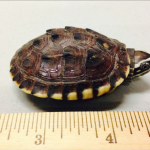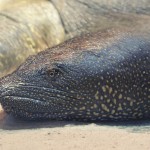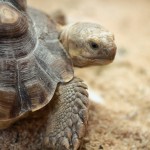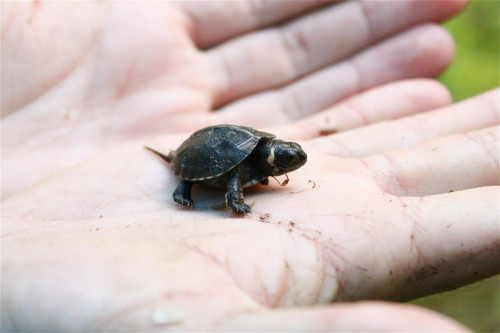
The United States is home to more species of tortoises and freshwater turtles than any other country in the world – 57 of the world’s 320 currently recognized species.
Unfortunately, 58% of all freshwater turtle and tortoise species – including at least 40% of the U.S. species – are threatened with extinction.1 Collection for the pet trade is a major threat to tortoises and freshwater turtles worldwide. It was disturbing to find that during the course of compiling this list, most of these 23 threatened species could be found for sale online.
It’s not only the pet trade that is decimating wild populations of tortoises and freshwater turtles. Habitat loss and alteration, road mortality, killing by fishermen, diseases, predation, and “plinking” – target practice(!) – are all taking a deadly toll on these extraordinary animals.
Here they are – in alphabetical order by scientific name – the 23 most threatened tortoise and freshwater turtle species in the United States:
1. Spotted turtle (Clemmys guttata)
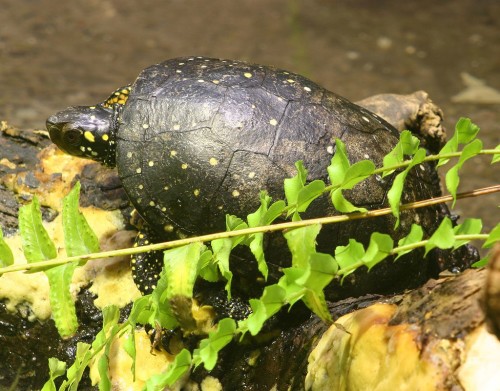
- IUCN Red List: Endangered (EN)
- Listed in CITES Appendix II
- Threats: “The spotted turtle is impacted by collection for personal pets or trade, mortality on roads and from agricultural machinery, habitat degradation, predation, and invasive species.”(USFWS)
2. Blanding’s turtle (Emydoidea blandingii)
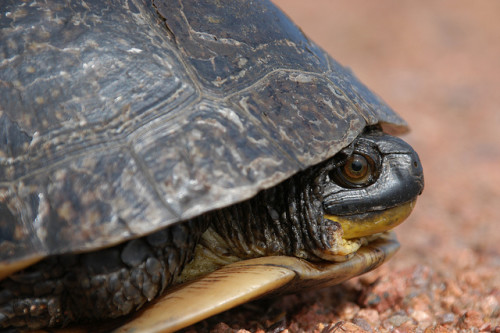
- IUCN Red List: Endangered (EN)
- Listed in CITES Appendix II
- Threats: Commercial pet trade (“lots of multiple adult females suspected to be caught from the wild”), road mortality and “bycatch of the commercial trapping of snapping turtles using baited traps, and a ready market exists”.
3. Northern Western Pond Turtle (Emys marmorata)
- IUCN Red List: Vulnerable (VU)
- Threats: Habitat loss and fragmentation. “These losses fragment remaining populations and, perhaps, magnify the effects of introduced species through predation, competition, and epidemic disease(s). Historically, A. marmorata were collected for the food and pet trades.”
4. Southern Western Pond Turtle (Emys pallida)
The Western pond turtle (Actinemys marmorata) was split into Emys marmorata and Emys pallida2.
- IUCN Red List: Vulnerable (VU)
5. Mojave Desert Tortoise (Gopherus agassizii)
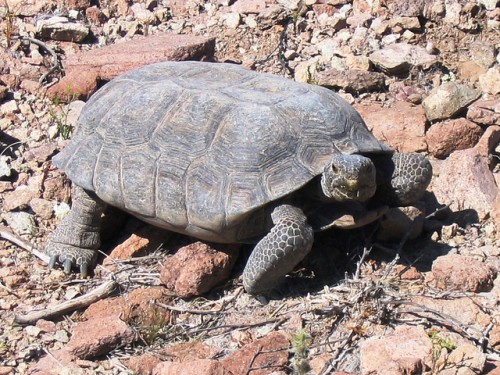
- IUCN Red List: Vulnerable (VU)
- Tortoise and Freshwater Turtle Specialist Group draft assessment: Critically Endangered (CR)
- Listed in CITES Appendix II
- Threats: Human disturbances, including livestock grazing, urban development, and off-road vehicle use.
6. Sonoran Desert Tortoise (Gopherus morafkai)
In 2011, the Sonoran Desert Tortoise was recognized as a separate species from Gopherus agassizii.
- IUCN: not evaluated
- Tortoise and Freshwater Turtle Specialist Group draft assessment: Vulnerable (VU)
7. Gopher Tortoise (Gopherus polyphemus)
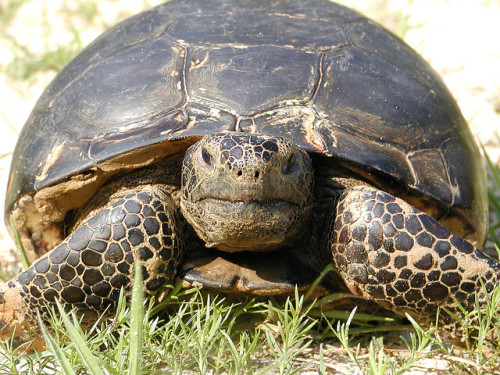
- IUCN Red List: Vulnerable (VU)
- Tortoise and Freshwater Turtle Specialist Group draft assessment: Endangered (EN)
- Listed in CITES Appendix II
- Threats: Habitat fragmentation and degradation, predation, inadequacy of regulatory mechanisms, and incompatible use of herbicides in forest management, silviculture activities (pine tree farming), road kill, and pet collection.(USFWS)
8. Diamondback terrapin (Malaclemys terrapin)
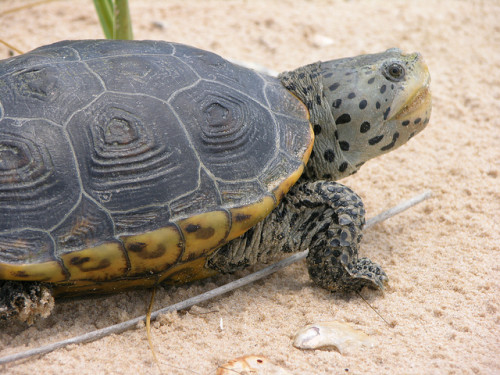
According to the U.S. Fish and Wildlife Service: “Exports of this species from the United States have increased from under 1,000 turtles per year in 1999 to 3,000 turtles per year by 2010, with a high of 6,000 turtles exported in the year 2006. Asian countries began importing Diamondback terrapins and other U.S. species due to the depletion of most of their native turtle species, with some vendors selling as many as 2,000-3,000 of these turtles in a single year. It appears that the species is used both in the pet and the food and medicinal trades.”
- IUCN Red List: Near Threatened (NT)
- Tortoise and Freshwater Turtle Specialist Group draft assessment: Vulnerable (VU)
- Listed in CITES Appendix II
- Threats: Collection for the pet trade, urbanization, drowning in crab pots, females frequently killed by cars during nesting season.
9. Bog turtle (Glyptemys muhlenbergii)
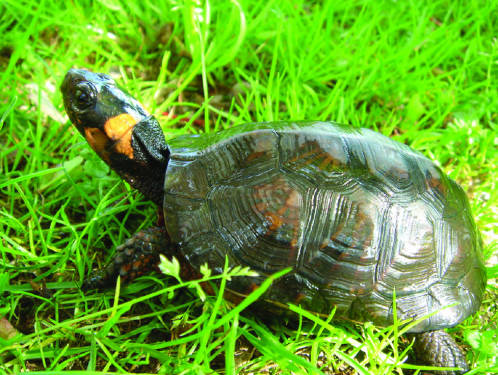
The Bog Turtle is one of the smallest turtles in the world. Adults measure just 7.9 to 11.4 cm (3.1 to 4.5 inches).
“A number of sites inhabited by Bog Turtles are under government or NGO ownership and management, while owners of lands where bog turtles occur are engaged where possible to manage bog turtle sites optimally. Due to the high risk of illegal collection, localities are generally held in secrecy.”
- IUCN Red List: Critically Endangered (CR)
- Listed in CITES Appendix I
- Threats: Loss of the majority of suitable habitat, collection for the pet trade, fragmentation and degradation of remaining habitats, and possibly roadkill and increased predation rates. Epidemic disease, and climate change “are recent developments of unknown but potentially severe future impact.”
10. Barbour’s Map Turtle (Graptemys barbouri)
- IUCN Red List: Vulnerable (VU)
- Listed in CITES Appendix III
- Threats: Habitat degradation, collection for pet trade, harvesting for food, predation and “some shooting is thought to still continue”.
11. Cagle’s Map Turtle (Graptemys caglei)
- IUCN Red List: Endangered (EN)
- Listed in CITES Appendix III
- Threats: “Its range has reduced by half to two-thirds since 1974, and the species is now restricted to a single stretch of about 120 km of the lower Guadalupe river, where the population appears to be under continuing threat from habitat degradation, disturbance and water diversion. Further distribution and population trend data may document that the species warrants listing as Critically Endangered.”
12. Yellow-blotched Map Turtle (Graptemys flavimaculata)
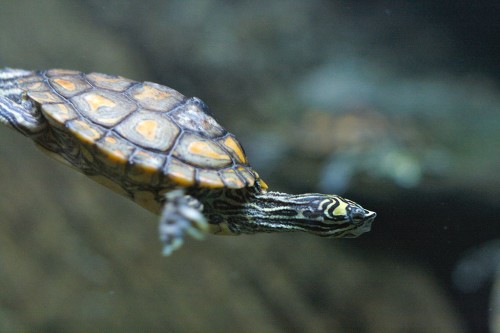
- IUCN Red List: Vulnerable (VU)
- Listed in CITES Appendix III
- Threats: “Past commercial and current personal collection for pets, wanton shooting of basking turtles, exceptionally high (increased) nest predation, at the order of 90%, by (subsidized) fish crows, raccoons and fire ants, and reduced reproductive success as a result of human disturbance of preferred nesting sites, have all been indicated as significant additional impacts on populations.”
13. Pascagoula Map Turtle (Graptemys gibbonsi)
- IUCN Red List: Endangered (EN)
- Listed in CITES Appendix III
- Threats: Populations have declined by 80 – 90% since 1950 (2 – 3 generations). Collection for the pet trade, poisoning of mollusks by water pollution, habitat disturbance and destruction, wanton killing by fishermen and others.
14. Ringed Map Turtle/Ringed Sawback (Graptemys oculifera)
- IUCN Red List: Vulnerable (VU)
- Listed in CITES Appendix III
- Threats: Collection for pet trade, shooting, incidental take in fisheries, disturbance of basking and nesting sites, water pollution caused by catchment management infrastructures and practices, riverside paper industries, and riverine gravel mining.
15. Pearl River Map Turtle (Graptemys pearlensis)
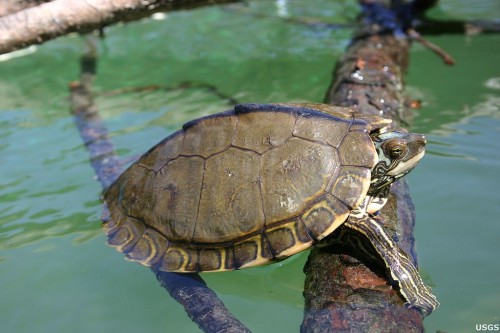
- IUCN Red List: Endangered (EN)
- Listed in CITES Appendix III
- Threats: Populations have declined by 80 – 90% since 1950 (2 – 3 generations). Collection for the pet trade, poisoning of mollusks by water pollution, wanton destruction by fishermen and “plinking rednecks”.
16. Alligator Snapping Turtle (Macrochelys temminckii)
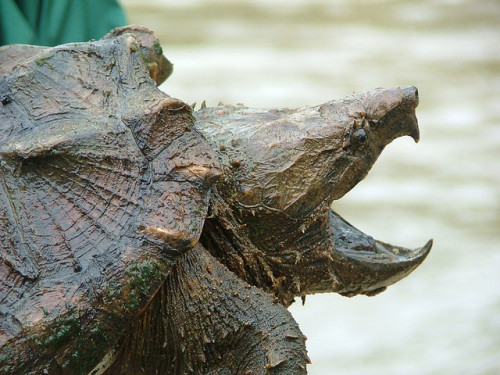
- IUCN Red List: Vulnerable (VU)
- Listed in CITES Appendix III
- Threats: Habitat alteration,exploitation by trappers for a large domestic market and a growing international market for its meat, pollution and pesticide accumulation, ingestion of fishing hooks, collection for the pet trade, and release of pet-trade Macrochelys.
In 2014, the Alligator snapping turtle, (Macrochelys temminckii) was divided into three species. The two newly recognized species are listed below.3
17. Suwannee alligator snapping turtle (Macrochelys suwanniensis)
18. Apalachicola alligator snapping turtle (Macrochelys apalachicolae)
19. Alabama Red-bellied Turtle (Pseudemys alabamensis)
- IUCN Red List: Endangered (EN)
- Threats: Collection for the pet trade and extremely limited distribution (rivers in and peripheral to the Mobile–Tensaw Delta in Mobile and Baldwin counties, Alabama, and a recently discovered population in the lower Pascagoula River, Mississippi.)4
20. Flattened musk turtle (Sternotherus depressus)
- IUCN Red List: Critically Endangered (CR)
- Threats: Collection for the pet trade and an extremely limited range. This species inhabits “a single drainage system in Alabama” which is under severe impact from “pollution and sedimentation from nearby open coal mining”.
21. Eastern Box Turtle (Terrapene carolina)
- IUCN Red List: Vulnerable (VU)
- Listed in CITES Appendix II
- Threats: Collection for the pet trade and “turtle races”, degradation, fragmentation and destruction of habitat, pollution and pesticides.
22. Ornate Box Turtle (Terrapene ornata)

- IUCN Red List: Near Threatened (NT)
- Listed in CITES Appendix II
- Threats: “Substantial numbers” collected for the pet trade, habitat loss as prairies were converted to cropland, and killing by cars.
23. Big Bend Slider (Trachemys gaigeae)
- IUCN Red List: Vulnerable (VU)
- Threats: Restricted habitat “subject to major hydrological management and engineering works”, collection for pet trade, harvesting for food, “plinking” (target practice), and occasional hybridisation with T. scripta elegans.
Meanwhile, the United States is handing out progressively lengthy prison terms for turtle trafficking.
- Sentenced April 2016: Kai Xu. 57 months in prison, $17,000 in restitution for six counts of smuggling turtles out of the United States.
- Sentenced August 2015: Keith Cantore. 41 months in prison, three years of supervised release, $41,100 fine for violating attempting to purchase threatened turtles that were captured in violation of state law.
- Sentenced April 2015: Lawrence Treigle. 15 months in prison, two years of supervised release for conspiracy to smuggle wildlife out of the United States.
- Sentenced December 2014: Kwong Wa Cheung. Two months in federal prison, 2 years of supervised release, $12,000 fine for mislabeling wildlife intended for foreign commerce.
- Sentenced January 2014: Nathaniel Swanson. One year in prison and three years of supervised release for conspiracy to smuggle wildlife out of the United States.
- Sentenced August 2013: Olivia Terrance. 18 months in prison, three years of supervised release for conspiracy to smuggle wildlife out of the United States.
- Sentenced April 2012: Atsushi Yamagami. 21 months in prison, $18,403 fine for smuggling wildlife into the United States.
This year, the U.S. will add three freshwater turtle species to CITES Appendix III (not subject to a vote of the Parties to CITES). This means that the U.S. is requesting the cooperation of other countries to prevent unsustainable or illegal trade, and any international trade requires appropriate documentation. These species are the Florida softshell turtle (Apalone ferox), smooth softshell turtle (Apalone mutica) and spiny softshell turtle (Apalone spinifera).
Tortoises and freshwater turtles bear the tragic distinction of being the world’s most endangered clade, with more than half of the species threatened with extinction. A seemingly endless list of human disturbances continues to push these wonderfully unique animals closer to oblivion – yet this quiet crisis rarely makes headlines.
If we are to save these wonders of nature from the maw of extinction, we must give them a voice.
Here is what we are doing about it: We at Annamiticus are now including tortoises and freshwater turtles with our flagship species (rhinos and pangolins) and are working to increase media coverage and public awareness of the global turtle crisis. Here’s how you can help: Take the first step for tortoises and freshwater turtles today by sharing this list with others. Our shelled friends are counting on us – don’t let them down.
1. Turtle Taxonomy Working Group [van Dijk, P.P., Iverson, J.B., Rhodin, A.G.J., Shaffer, H.B., and Bour, R.]. 2014. Turtles of the world, 7th edition: annotated checklist of taxonomy, synonymy, distribution with maps, and conservation status. In: Rhodin, A.G.J., Pritchard, P.C.H., van Dijk, P.P., Saumure, R.A., Buhlmann, K.A., Iverson, J.B., and Mittermeier, R.A. (Eds.). Conservation Biology of Freshwater Turtles and Tortoises: A Compilation Project of the IUCN/SSC Tortoise and Freshwater Turtle Specialist Group. Chelonian Research Monographs 5(7):000.329–479, doi:10.3854/crm.5.000.checklist.v7.2014.
2. (2014) Recently proposed changes of scientific names of turtles. Turtle Survival, pp. 62
3. Thomas, T.M. et al. 2014. Taxonomic assessment of Alligator Snapping Turtles
(Chelydridae: Macrochelys), with the description of two new species from the
southeastern United States. Zootaxa 3786 (2): 141–165.
4. Reproductive and Hatchling Ecology of the Alabama Red-Bellied Cooter (Pseudemys alabamensis): Implications for Conservation and Management. Chelonian Conservation and Biology 8(1):66-73. 2009. doi: http://dx.doi.org/10.2744/CCB-0744.1
Help fight against wildlife trafficking: Support our advocacy work and educational projects.

